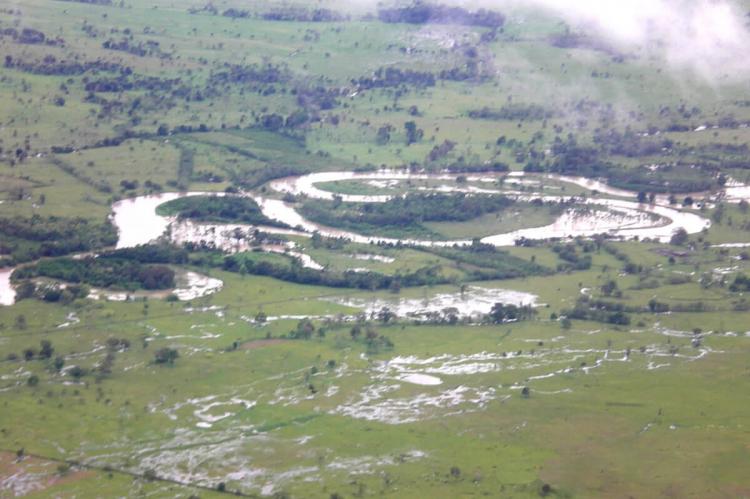Los Katíos National Park: A Jewel of Biodiversity in Colombia
Los Katíos National Park, a protected wildlife sanctuary nestled in northwest Colombia near the border with Panama, is a true ecological marvel. This national park encompasses significant wetland areas, including the vast Ciénagas de Tumaradó and boasts a remarkable biodiversity.
Los Katíos National Park: A Jewel of Biodiversity in Colombia
Los Katíos National Park, a protected wildlife sanctuary nestled in northwest Colombia near the border with Panama, is a true ecological marvel. This national park, spanning approximately 72,000 hectares (178,000 acres), encompasses significant wetland areas, including the vast Ciénagas de Tumaradó. It boasts a remarkable biodiversity and was recognized as a UNESCO World Heritage Site in 1994.
Geographical Location and Topography
Located within the Darién Gap, a densely forested area shared by Panama and Colombia, Los Katíos National Park is contiguous with the much larger Darién National Park of Panama. Together, they form a continuous protected area that safeguards one of the world's most species-rich regions of moist lowland and highland rainforest.
The topography of Los Katíos National Park is diverse, with low hills, forests, and wet plains throughout its expanse. The elevation ranges between 50 and 600 meters (160 and 1,970 feet), with some hills reaching up to 250 meters (820 feet) and others soaring to 600 meters (2,000 feet) in height. Swampy marshes spread over nearly half of the park's area, adding to its unique and diverse landscape.
Climate and Hydrology
Los Katíos National Park experiences a humid tropical climate, with an estimated 1,500 to 1,900 millimeters (59 to 74 inches) of rainfall per year in this region of Colombia. Two significant features dominate the park's hydrology:
- Serranía del Darién Mountains: These mountains, located in the western part of the park, form a crucial part of the park's ecosystem.
- Atrato River Floodplains: In the eastern part of the park, the Atrato River floodplains hold exceptionally fertile alluvial plains, consisting of low-lying terraces that flood frequently and high terraces that seldom flood.
The wetlands of the Atrato River floodplain are truly unique. An Indigenous species, the cativo tree, can reach heights of up to 50 meters (160 feet). This tree lends its name to the distinctive 'catival' formation found only in Colombia, southern Central America, and Jamaica.
Remarkable Landscapes and Natural Wonders
Los Katíos National Park has several notable landscape features that add to its natural beauty and ecological significance. The 25-meter (82-foot) Tendal waterfall and the impressive 100-meter (328-foot) Tilupo waterfall are just two examples of the park's breathtaking waterfalls. Additionally, the Tumaradó swamps, a vast wetland ecosystem, further contribute to the park's rich biodiversity.
Flora and Fauna: A Biodiversity Hotspot
Los Katíos National Park is a genuine biodiversity hotspot, harboring an exceptional variety of plant and animal species. With over 25% of the bird species reported for Colombia in less than 1% of the total national territory, the park is a birdwatcher's paradise. It is home to around 450 species of birds, representing 25% and 50% of the avifaunas of Colombia and Panama, respectively.
The park is also the only place in South America where many Central American mammal species occur, including threatened species such as the American Crocodile, Giant Anteater, and Central American Tapir. Its strategic location in northern Colombia made it a filter or barrier to the interchange of fauna between the Americas during the Tertiary period, contributing to its unique biodiversity.
Furthermore, Los Katíos National Park is considered a Pleistocene refuge, a hypothesis supported by the high proportion of endemic plants within its boundaries.
Socio-Economic and Historical Significance
The region where Los Katíos National Park is located has a rich cultural and historical significance. Initially inhabited by the Kuna Indigenous group, the Chocó region was later surrendered to the Katío-Embera people due to internal conflicts, leading the Kuna to emigrate to Panama.
The Darién region, to which Los Katíos belongs, played a crucial role in human migration, as it was the land bridge used by the first settlers who migrated from North to South America some 20,000 years ago. During the post-Columbian period, Spanish conquistadors such as Rodrigo de Bastidas, Alonso de Ojeda, and Vasco Núñez de Balboa were the first Europeans to discover this region in 1501.
More recently, approximately 1% of the park's area in the Sautatá region was agriculturally developed and used primarily for cultivating sugarcane. After the park's establishment in 1974, around 150 local families were gradually relocated to nearby towns like Unguía, Puente América, Tumaradó, and Cacarica, ensuring the protection of the park's natural resources.
Conservation Efforts and Sustainable Development
Los Katíos National Park plays a vital role in preserving the region's unique biodiversity and promoting sustainable development. Ongoing conservation efforts involve collaboration between local communities, government agencies, and international organizations to protect the park's ecosystems and ensure the well-being of its inhabitants.
Some key conservation initiatives include:
- Establishing and strengthening protected areas
- Promoting sustainable tourism and eco-tourism activities
- Engaging local communities in conservation efforts and providing alternative livelihood opportunities
- Conducting research and monitoring programs to better understand and preserve the park's biodiversity
- Raising awareness about the importance of the park and its ecological significance
By striking a balance between conservation and sustainable development, Los Katíos National Park serves as a model for preserving the region's rich natural heritage while empowering local communities and fostering economic growth.
